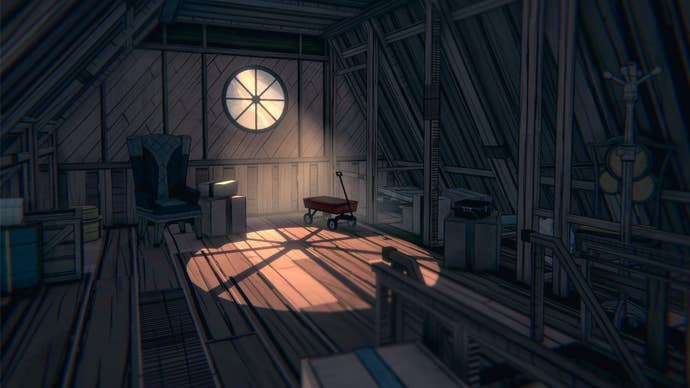In Blue Prince, what lies on the other side of the door is up to you.
Thick pen lines frame block-coloured panels, all arranged with a slight jazz-like lilt.
There’s a slight unevenness to it all, a slight unnerving-ness coming from it.

Or perhaps you have grander aspirations.
Or maybe it’s a chapel with rows of wooden pews and sunlight coloured through stained glass windows.
Perhaps it’s a dark room such as a photographer would have.

You are alone in this strange mansion that rearranges itself.
Rather than simply leave his fortune to you, then, he’s designed a test.
But there’s one slight complication: usually there are only 45 rooms in the mansion.

The 46th is elusive to the point of being mythical.
Can you find it?
The rooms don’t stay put.

Every day you attempt the puzzle, the blueprint of the house is wiped clean.
Every day, you piece it together again, room by room, door by door.
What you find is very much up to you.

It works like this.
You play this all from a first-person perspective.
It’s a bit like pulling cards in a Roguelike game.

Once placed, a room becomes a fixed part of the layout of the house during this attempt.
Walk through into the next room, do the same thing again.
As you progress, you’ll notice that different rooms do different things.
What that means, though, you won’t really know.
You won’t know what a lot of this does.
You’ll naturally assume keys open locked doors, but the gems?
It’s not so clear.
With this in mind, you’ll probably get further and discover new kinds of rooms.
You might find a workshop where you could combine items, though which ones, you’ll not know.
You might find an electrical box with unlabelled buttons that does inexplicable things.
Everything you find hints at a bigger puzzle that you’re only beginning to understand.
That’s how Blue Prince goes.
Every day you begin again, you will try something new with a bit more knowledge to guide you.
The more you play, the more of the game and the puzzle you’re facing comes into view.
I can’t wait to play more.